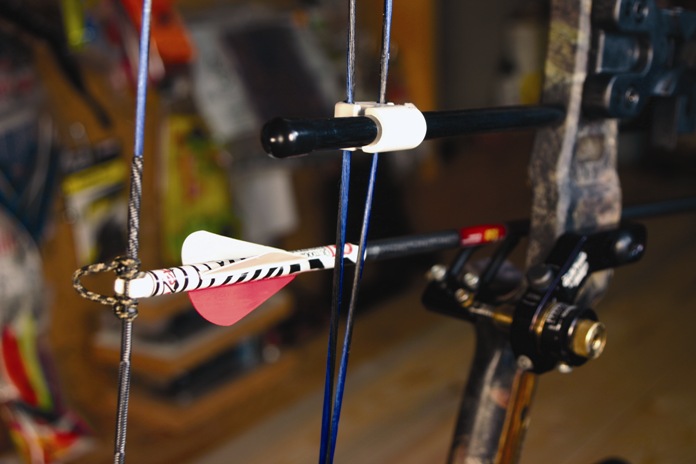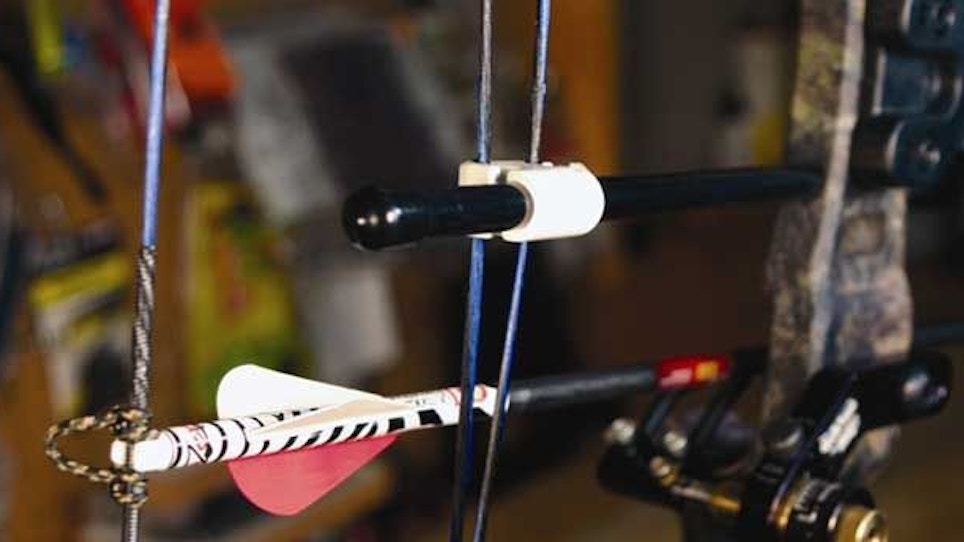 I should have come to full draw with complete confidence, equipment worries the furthest thing from my mind. I couldn’t help it, though. It was the last day—the last hours, really—of a six-day bear hunt, and the cinnamon black bear I’d long yearned for was 20 yards out and broadside. I was about to loose an arrow tipped with a G5 Montec broadhead and miniscule 2-inch vanes. Never mind that these vanes had performed well on targets; for a holdout like me who has always believed in the virtues of 4- or 5-inch feathers with substantial helicals, 2-inch vanes were hard to believe in.
I should have come to full draw with complete confidence, equipment worries the furthest thing from my mind. I couldn’t help it, though. It was the last day—the last hours, really—of a six-day bear hunt, and the cinnamon black bear I’d long yearned for was 20 yards out and broadside. I was about to loose an arrow tipped with a G5 Montec broadhead and miniscule 2-inch vanes. Never mind that these vanes had performed well on targets; for a holdout like me who has always believed in the virtues of 4- or 5-inch feathers with substantial helicals, 2-inch vanes were hard to believe in.
That cinnamon pelt is hanging on the wall beside me now, and most of my arrows are still fletched with those 2-inch Blazer vanes, along with similar super-short designs by Duravanes and others. They made a believer out of me. Just when I thought I had the whole fletching thing figured out, along came not only the super-short vanes, new arrow shafts and rests, all which perform best with different fletching types. New materials in vanes and in arrow shafts meant that some of the adhesives I’d relied on in the past were no longer effective or required additional preparation for use.
Vanes & Feathers, Pros & Cons
Bowhunters have never had so much great gear to choose from, and fletching materials are no exception. The reason for fletching is to stabilize arrows in flight, and this is best achieved by imparting spin. Virtually any offset or helical fletching will impart some spin to any arrow. Up to a point, faster spin means surer and more consistent stabilization. Some fletching will impart more spin than will others. Beyond that, there are advantages and disadvantages of different styles of fletching. Several factors may affect fletching choice, but chief among these are the broadheads and arrow style being used.
The first decision most bowhunters will make is between feather fletching and plastic vanes. Feather fletching is more forgiving of contact with rests (or, for that matter, unfortunately placed tree limbs). It is lighter and faster. It has traditionally been thought to provide better broadhead control, particularly larger, fixed-blade heads. Many find it more aesthetically appealing. On the downside, feathers collapse when wet (though they can be waterproofed). They are noisy, both in the air and when bumped or scraped against tree trunks or clothing. They wear somewhat quickly and need some regular replacement.
Vanes, while heavier and a little slower, are also quieter and much more durable than feathers. At least one of the oft-stated disadvantages of vanes—that they are less forgiving of contact—has to some extent been mitigated by advances in rests, as well as by the use of shorter vanes. Finally, the increasing quality and popularity of open-on-impact broadheads has offset the need for maximum broadhead control.
For hunters shooting recurves and longbows, the decision is usually easy. Because in most cases they are shooting off the shelf with fingers and not a release aid, these hunters must generally use feather fletching, preferably with maximum helical.






